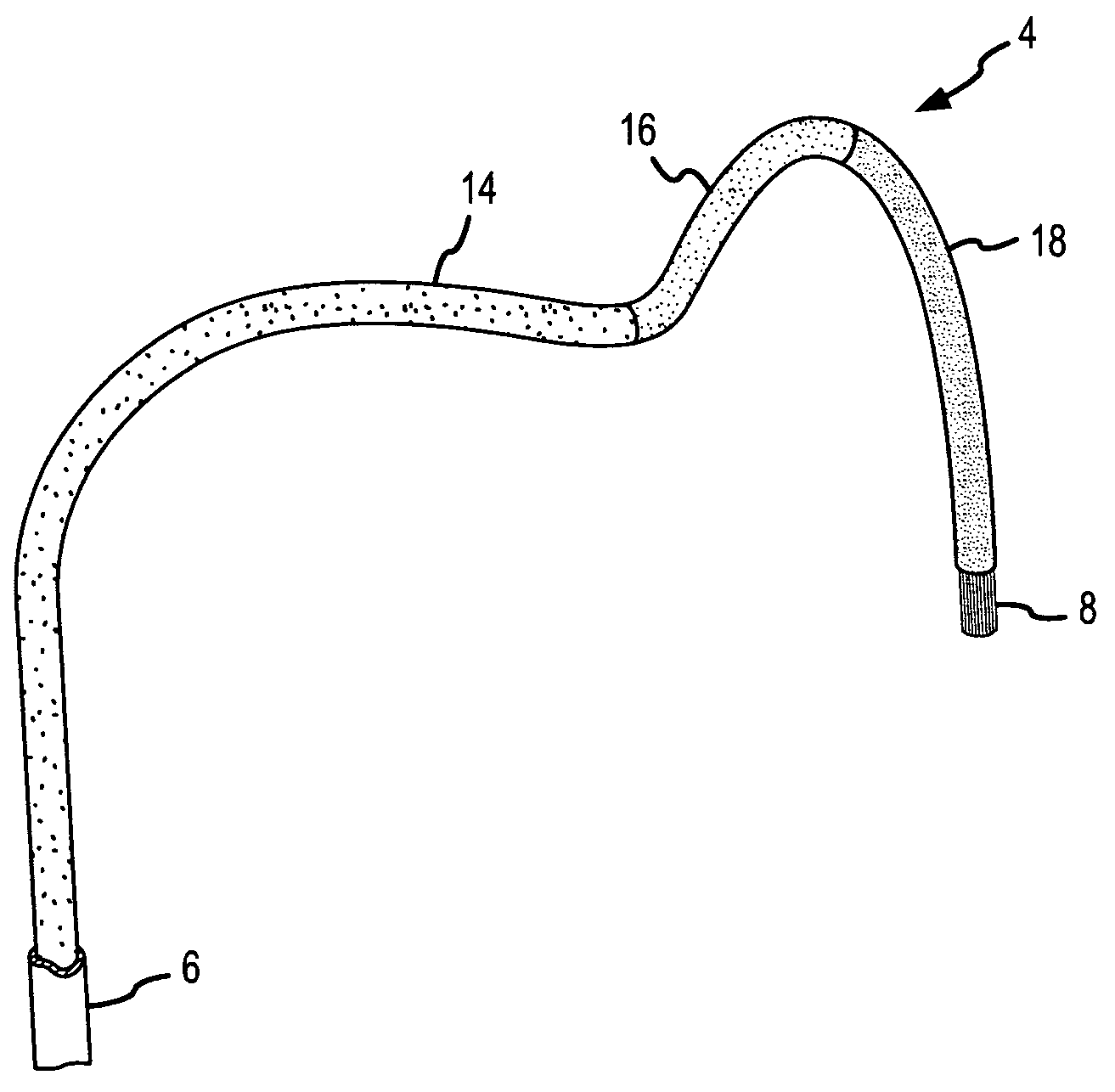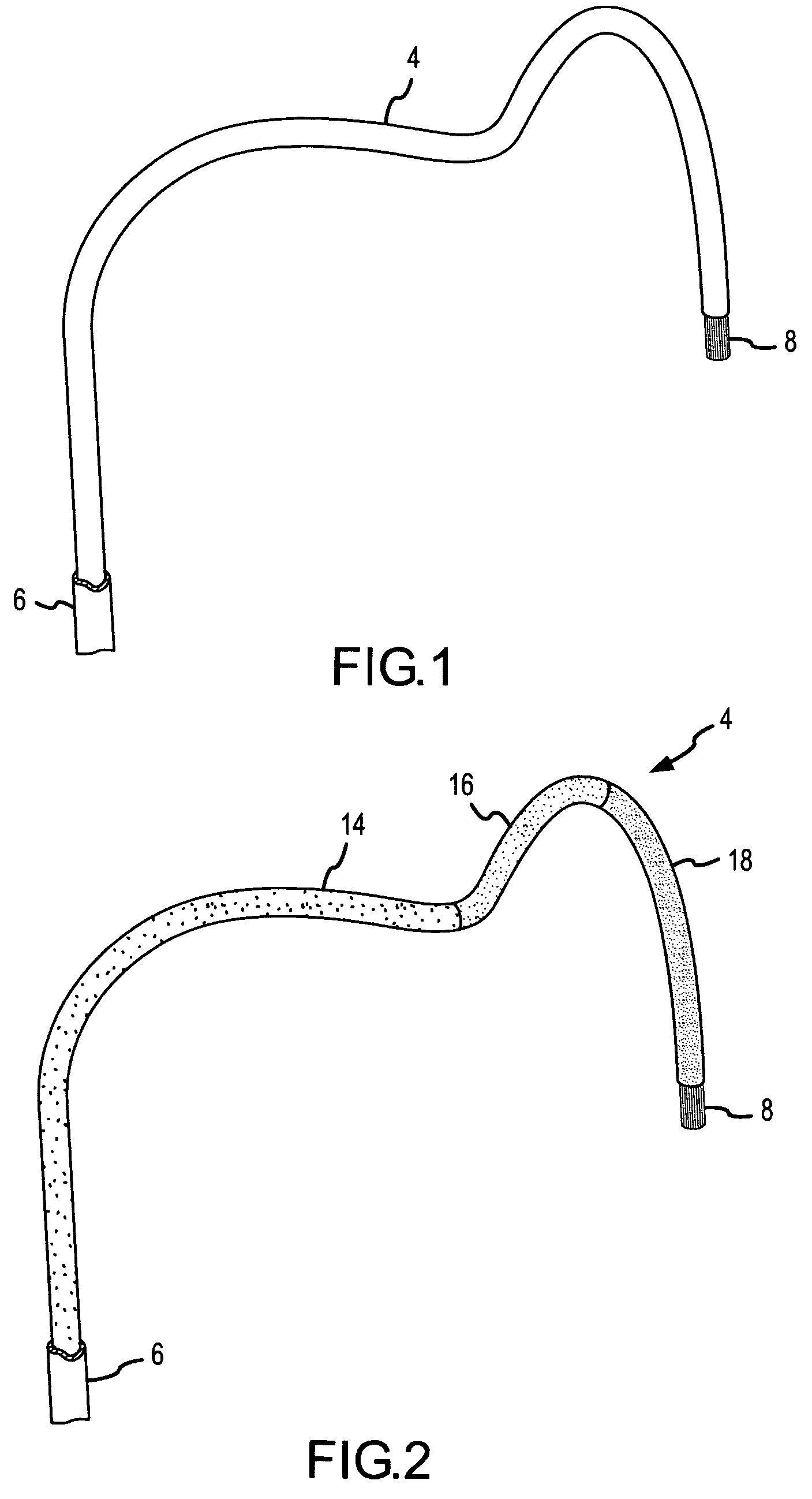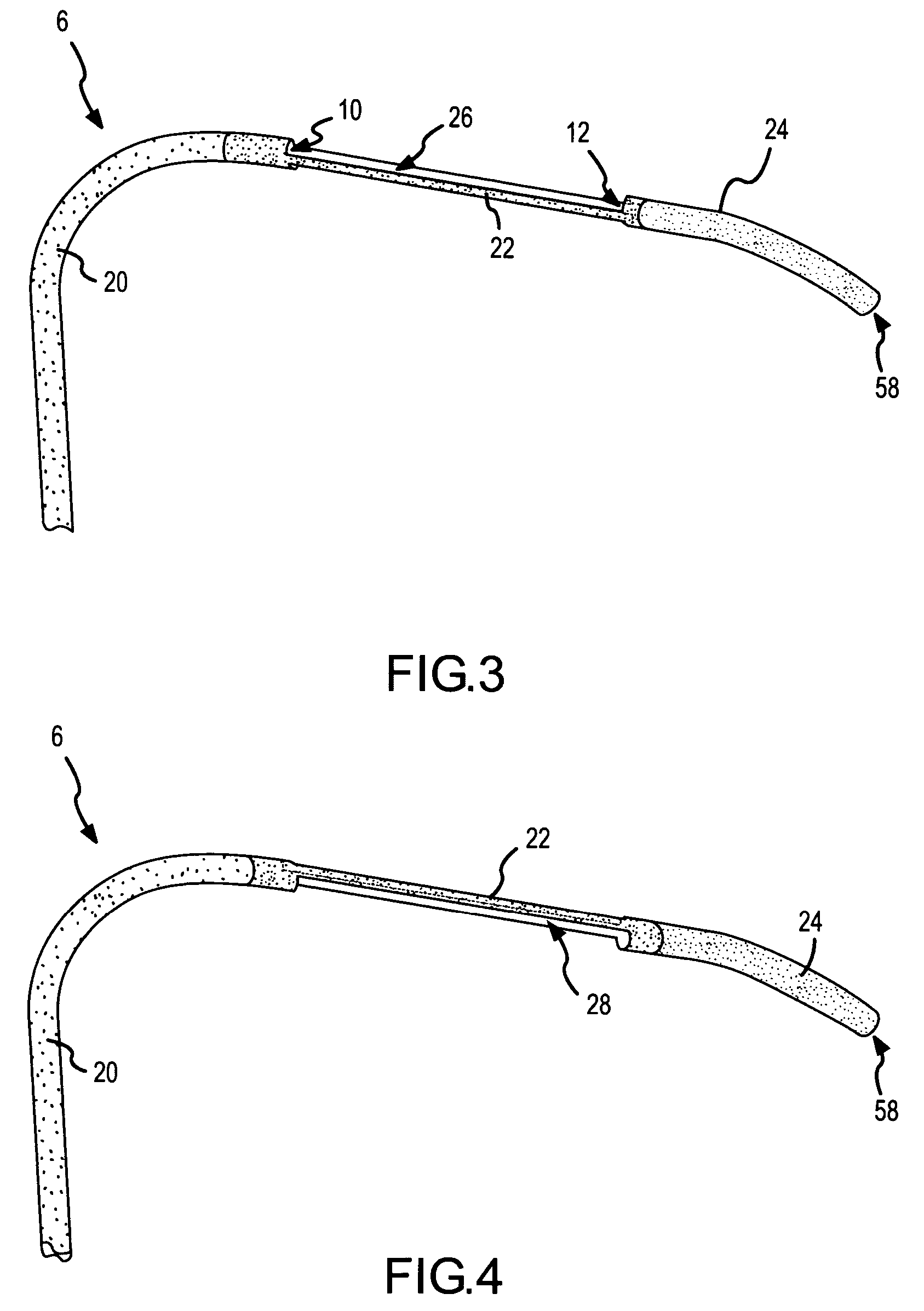Ablation catheter with suspension system incorporating rigid and flexible components
a technology of suspension system and catheter, applied in the field of catheter, can solve the problems of increasing the vulnerability to thromboembolism, increasing the vulnerability of thromboembolism, and significant patient discomfort and even death, and achieves the effect of improving linear lesions and being convenient to opera
- Summary
- Abstract
- Description
- Claims
- Application Information
AI Technical Summary
Benefits of technology
Problems solved by technology
Method used
Image
Examples
Embodiment Construction
[0031]Several embodiments of an endocardial ablation system 2, including an ablation catheter 4 with an armature-type suspension system, an introducer sheath 6, and an ablation electrode 8, according to the present invention is depicted in the figures. As described further below, the endocardial ablation system 2 of the present invention provides a number of advantages, including, for example, mitigating electrode-tissue contact problems. The suspension system of the ablation catheter 4 facilitates enhanced tissue contact in difficult environments (e.g., during ablation of a contoured or trabecular surface on a beating heart), whether creating a spot lesion or a continuous linear lesion, by facilitating contact of the ablation electrode 8 with surface contours of endocardial tissue. This is particularly useful for treatment of atrial flutter where it is desirable to create a linear lesion along the trabecular slope of the isthmus between the ostium of the inferior vena cava and the ...
PUM
 Login to View More
Login to View More Abstract
Description
Claims
Application Information
 Login to View More
Login to View More - R&D
- Intellectual Property
- Life Sciences
- Materials
- Tech Scout
- Unparalleled Data Quality
- Higher Quality Content
- 60% Fewer Hallucinations
Browse by: Latest US Patents, China's latest patents, Technical Efficacy Thesaurus, Application Domain, Technology Topic, Popular Technical Reports.
© 2025 PatSnap. All rights reserved.Legal|Privacy policy|Modern Slavery Act Transparency Statement|Sitemap|About US| Contact US: help@patsnap.com



